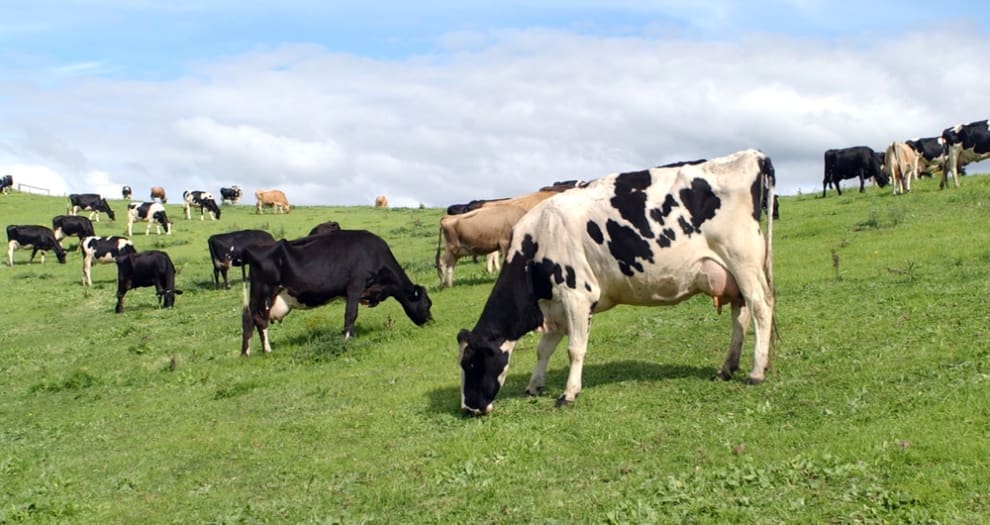REPORTS of humans contracting Avian Influenza (bird flu) via inflected cattle in the United States have again raised concerns about zoonotic diseases – those which can suddenly pass from one species to another.
Bird flu infection in US dairy cows was first reported by the US Department of Agriculture in Texas and Kansas on March 25, and now at least two cases have been found in humans.
 In only the second case seen in humans in the US, the US Centres for Disease Control and Prevention on Monday issued a statement saying a person in Texas had tested positive for highly pathogenic avian influenza (H5N1 bird flu) after coming into contact with dairy cattle suspected of being infected.
In only the second case seen in humans in the US, the US Centres for Disease Control and Prevention on Monday issued a statement saying a person in Texas had tested positive for highly pathogenic avian influenza (H5N1 bird flu) after coming into contact with dairy cattle suspected of being infected.
The Texas Department of State Health Services said the patient’s only experienced symptom was eye inflammation. The person was tested late last week and the Centers for Disease Control and Prevention confirmed the results over Easter.
The person is now being treated with antiviral medication.
“This person has a very mild case — just conjunctivitis, which is pinkeye. That’s important to emphasise because it’s not in the lungs, it’s not pneumonia, which would make it easier to transmit from person to person,” CBS health expert Dr Céline Gounder said.
Human cases of bird flu, otherwise known as H5N1, are known to produce a range of symptoms, ranging from mild eye infection and respiratory symptoms, to more severe effects such as pneumonia, leading to death, Texas officials said.
The CDC said this was only the second time that a human in the US had contracted bird flu, which typically infects wild birds but can spread to domestic species. It has killed millions of birds across the world in its latest outbreak and has also spread to other mammal populations, killing sea lions, seals, possums and polar bears.
Scientists say those animals probably got sick when they ate or interacted with infected birds. The virus can spread through faeces and saliva and through contact with contaminated surfaces.
Large stock and financial losses have been reported in US egg and meat chicken operations from bird flu outbreaks.
Just before Easter, federal US agencies announced that dairy cattle were the latest animal group to have contracted a strain of the virus. Dairy cattle in Texas, Kansas and Michigan were identified. No reports have yet emerged in US beef cattle.
Although it has spread to at least one individual, the Texas Health Department said it remained “extremely rare” for bird flu to spread from person-to-person.
“Initial testing shows the virus has not changed in a way to make it more likely to spread among humans,” the department said. “DSHS is providing guidance to affected dairies about how to minimize workers’ exposure and how people who work with affected cattle can monitor for flu-like symptoms and get tested.”
The last time a human in the US contracted bird flu was in Colorado in 2022, when a man working in a poultry slaughter facility became infected. He recovered after being isolated and treated with anti-virus drugs.
“Human infections can happen when enough virus gets into a person’s eyes, nose, or mouth, or is inhaled,” the CDC said at the time. “People with close or lengthy unprotected contact (not wearing respiratory or eye protection) with infected birds or places that sick birds or their mucous, saliva, or feces have touched, may be at greater risk of H5N1 virus infection.”
US officials have emphasised that risk to general public remains low, and that practicing good hygiene can help prevent the spread of this and many other illnesses.
Because US dairy cattle have been impacted, officials have also warned against consuming raw unpasteurised milk. Milk purchased in stores is required to be pasteurised and was safe to drink, officials said.
The US Centres for Disease Control and Prevention issued a statement on Monday saying the latest human infection did not change the H5N1 bird flu human health risk assessment for the US general public, which CDC considered to be low.
“However, people with close or prolonged, unprotected exposures to infected birds or other animals (including livestock), or to environments contaminated by infected birds or other animals, are at greater risk of infection. CDC has interim recommendations for prevention, monitoring, and public health investigations of HPAI A(H5N1) viruses,” it said.
- Bird flu has not been detected in Australia – either in avian or other animal species.
